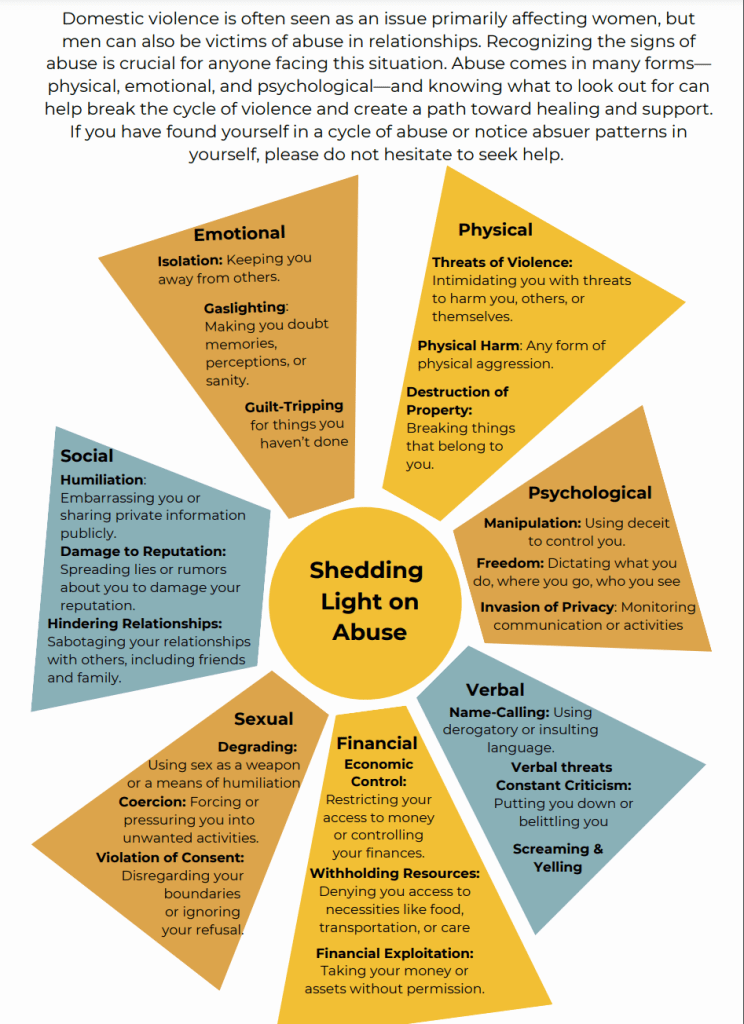Domestic Abuse Awareness Month is Here
- Rebecca Beato
- Oct 1, 2024
- 2 min read
Updated: Mar 25

In the United States, October is Domestic Abuse Awareness Month. Unfortunately, while there are more and more organizations working to raise awareness, provide prevention services, and educate people on the signs and risks of domestic violence, it is still an issue that continues to deeply affect millions of men, women, and children across the world.
According to Break the Cycle, nearly every 1 in 2 women and more than 2 in 5 men reported experiencing intimate partner violence at some point in their lifetime. To put it another way, every minute 32 people experience intimate partner violence in the United States. That means that every single one of us has either been affected personally by domestic violence, or knows someone who has been (whether you are aware of it or not).
While most people think of domestic violence only as”counts” if it is physical abuse, it is crucial to understand that it encompasses a range of behaviors and patterns that can be just as dangerous.
Emotional Abuse: This includes manipulation, constant criticism, and humiliation, leading to a loss of self-esteem.
Financial Abuse: Controlling a partner’s finances or preventing them from working can leave them economically dependent and vulnerable.
Verbal Abuse: Insults, threats, and yelling can create a climate of fear and insecurity.
Psychological Abuse: This includes gaslighting, where the abuser makes the victim doubt their perceptions and feelings.
If you or someone you know exhibits these signs, it’s important to reach out for help:
Isolation: The abuser may prevent their partner from seeing friends or family.
Constant Monitoring: This can include checking phone messages, tracking whereabouts, or excessive questioning about daily activities.
Fearfulness: A partner may seem anxious or fearful around their significant other, avoiding topics that could trigger anger.
Sudden Changes in Behavior: Withdrawal from activities or social engagements can be a sign of distress.
Low Self-Esteem: Victims often feel worthless due to ongoing belittlement and manipulation.
How We Can Raise Awareness
Raising awareness about domestic violence is a collective effort. Here are some actionable ways to support one another and foster understanding:
Educate Yourself and Others: Learn about the different forms of domestic violence and share this knowledge with your community. Hosting or attending workshops can be an excellent way to facilitate discussions. Share the Domestic Violence Wheel with your network.
Listen and Validate: If someone confides in you about their situation, listen without judgment. Validate their feelings and experiences, which can be incredibly empowering for someone feeling isolated. When ready, offer to help connect them with local services for support.
Support Local Organizations: Many communities have numerous shelters and organizations dedicated to helping victims of domestic violence. Consider volunteering your time, donating, or helping to spread the word about their resources.
Promote Healthy Relationships: Share information on what healthy relationships look like—focusing on mutual respect, trust, and open communication can help others recognize red flags.
Advocate for Policy Changes: Support legislative measures that protect victims and hold abusers accountable. Advocacy can drive systemic change that addresses the root causes of domestic violence.
Use Social Media Wisely: Share resources, facts, and stories on social media platforms. Raising awareness online can help reach those who may need help but don’t know where to turn.

.png)




Comments